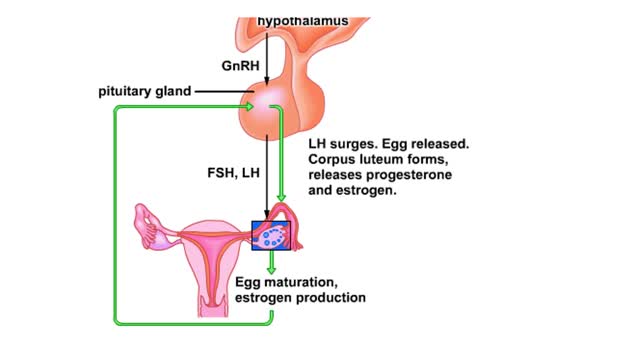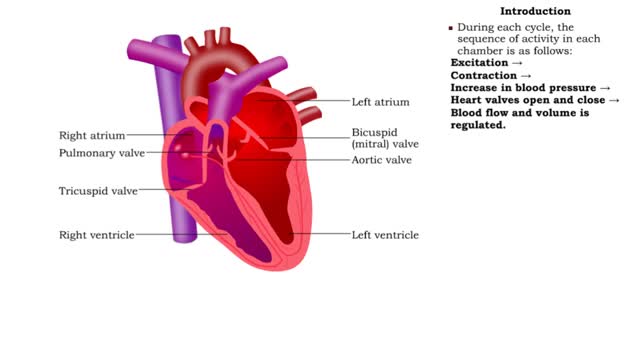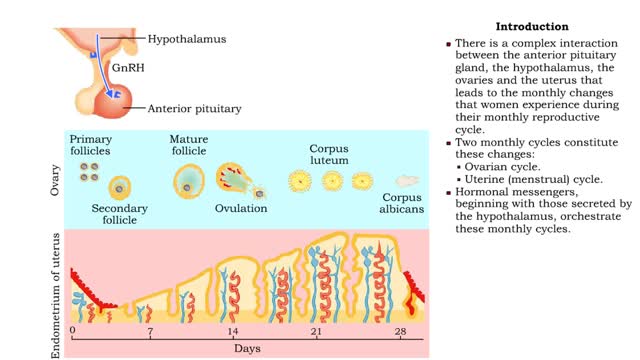Search Results
Results for: 'Five phases of cardiac cycle'
By: HWC, Views: 11197
• Heart rate is determined by the rate of depolarizations of the sinoatrial (SA) node. • Cardiac output is directly proportional to heart rate, the greater the heart rate the greater the cardiac output. • Changes in heart rate are associated with exercise, stress or injury. Nervous ...
Hormones and the menstrual cycle Animation
By: HWC, Views: 8122
Feedback loops to the hypothalamus and pituitary gland from the ovaries during the menstrual cycle Animation for a step-by-step explanation. Production of a releasing hormone (GnRH) by the hypothalamus prods the pituitary's anterior lobe to release FSH and LH. In the ovary, FSH and LH stimula...
HIV replication/ Replication cycle of HIV
By: HWC, Views: 8271
Replication cycle of HIV, one of the retroviruses. The HIV virus is surrounded by a lipid envelope with embedded proteins. A coat of viral proteins surrounds two strands of RNA and the enzymes used during replication. The virus attaches to and enters the host cell. Viral reverse trans...
Carbon fixing adaptations Animation
By: HWC, Views: 5290
Different plants trap carbon by different pathways. Most C3 plants evolved in moist, temperate zones. On hot dry days they close their stomata to conserve water and oxygen accumulates. Under these circumstances, the enzyme rubisco uses oxygen in an inefficient reaction that competes with t...
Electrical changes in the heart
By: HWC, Views: 10856
• ECG: Graph of the voltage changes that occur during the cardiac cycle. • Readings are taken by electrodes placed on the surface of the body. • Electrodes detect voltage changes caused by the electrical activity of the heart. • P wave = atrial excitation (atrial depolarization). ...
The primary factors that affect circulation - MABP, CO and SVR
By: HWC, Views: 11456
Introduction Blood flow is determined by the relative intensities of factors that drive and resist moving blood. • Cardiac output (CO) equals the mean arterial blood pressure (MABP, a driving force) divided by systemic vascular resistance (SVR, a resisting force). • Hormones and the cen...
Structures that affect circulation - heart and systolic/diastolic BP
By: HWC, Views: 11018
• Heart generates blood pressure. • Arterioles produce resistance thereby regulating blood flow to tissues. • Veins store blood; kidneys regulate blood volume; both affect venous return and cardiac output. ■ Contractions of the ventricles determine blood pressure, which drives th...
Female Reproductive System - Hormonal regulation (GnRH) الجهاز التناسلي للأنثى - التنظيم الهرموني
By: HWC, Views: 11498
• There is a complex interaction between the anterior pituitary gland, the hypothalamus, the ovaries and the uterus that leads to the monthly changes that women experience during their monthly reproductive cycle. • Two monthly cycles constitute these changes: • Ovarian cycle. • Uter...
Calvin cycle (The light-independent reactions )
By: HWC, Views: 10865
The light-independent reactions of photosynthesis occur in the stroma of the chloroplast. Carbon dioxide enters the leaf through tiny pores or stomata and diffuses into the chloroplast. The first stage of the Calvin cycle is the attachment of a carbon dioxide molecule to a 5-carbon ribulose bi...
Advertisement











